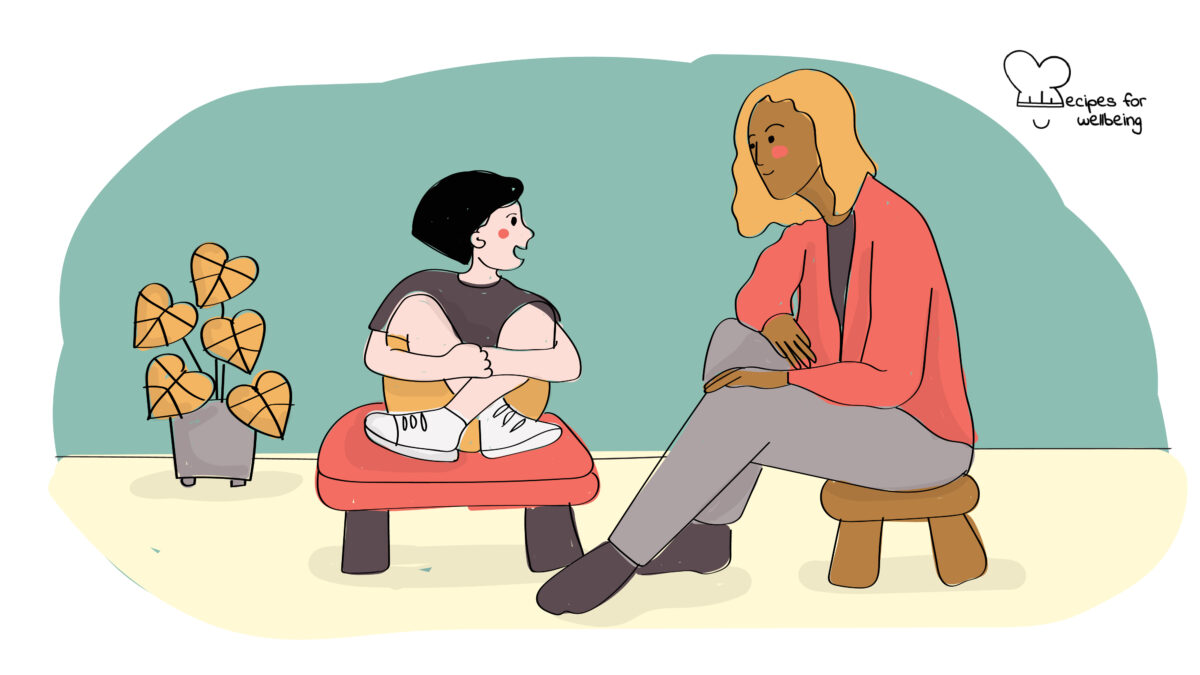
Compassionate listening
(…) we have to learn how to transform our own suffering so we can be there for those who are suffering and need our help. ―Thich Nhat Hanh
👥 Serves: 2-10 people
🎚 Difficulty: Medium
⏳ Total time: Ongoing
🥣 Ingredients: Compassion, mindfulness, awareness, self-regulation, “Zen and the Art of Saving the Planet” book by Thich Nhat Hanh (if you’re curious to find out more about it!)
🤓 Wholebeing Domains: Awareness, Community, Radical Care
💪 Wholebeing Skills: Compassion, Emotional intelligence, Focus, Holding space, Listening, Non-judgement, Perspective, Presence, Relating to Others

Compassionate listening
📝 Description
Tips to cultivate deep listening.
We are bombarded with sophisticated technology to aid communication, yet it appears that it has become increasingly difficult to communicate amongst ourselves. This recipe focuses on the importance of mindfulness to support deep listening. It is based on the teachings of Zen Buddhism, shared by late Zen Buddhist monk Thich Nhat Hanh in Zen and the Art of Saving the Planet (edited and with commentary by Sister True Dedication).
The core insight is that “you are listening with only one purpose: to give the other person a chance to speak out and suffer less.” This is easier said than done: what if the other person is saying something difficult for you to hear or something that goes against your values? Thich Nhat Hanh explains that you should refrain from interrupting them because what matters is not whether they are right or wrong, but whether you were able to “give them a chance to unburden themselves.”
At the same time, he also advises you to know your limits because some people experience so much suffering and violence in them that they may abuse your kindness and compassion. Your role is to help them “recognize, embrace, and deeply transform the suffering in them.” This recipe shares the top tips for deep, mindful, and compassionate listening, offered by Sister True Dedication.
If you are interested in more listening practices, you can check out our recipes “Active listening” for tips on how to engage with the other person actively; “Cultivating presence” to deepen your listening skills; and “Council circle” for gathering human beings in respectful conversations.
👣 Steps
Step 1 – Premise
Sister True Dedication points out that “listening is a training, a practice. It’s a gift we offer the other person, and it’s a gift we offer ourselves: to expand our perspective and encounter the human being in front of us in a deep way.” Read on for tips to cultivate compassionate listening.
Step 2 – Follow your breath
The first tip is to follow your breathing while listening. Paying attention to the flow of your breath helps you stay in the present moment (instead of being pulled away by our own internal chatter).
Step 3 – Trace your reactions
The second tip is to pay attention to what your breathing tells you about your reactions. In fact, the other person’s suffering can show up as changes in your breathing or other physical sensations. If your body gets tense, try to release those areas on an out-breath. If your breathing pattern becomes uneven or short, try to soften it gently.
Step 4 – Non-interrupting
The third tip is to refrain yourself from interrupting the other person. If it becomes painful for you to listen, protect yourself with compassion and remind yourself that you are listening with the purpose of letting them open up and speak out.
Step 5 – Keep compassion alive
The fourth tip is to keep your compassion alive for the entire duration of your listening. If it helps, Sister True Dedication offers these questions to ground yourself in compassion: What’s really hurting here? What are you really trying to say?
Step 6 – Listen to the in-betweens
The fifth tip is to use mindfulness to bridge the gap between what’s said and what’s left unsaid, because it is in the in-betweens that you can find insight.
Step 7 – Be honest with yourself
The last tip is to ask yourself if you are ready to listen. Do you have enough space inside? If not, it is advisable to say so and to offer to listen compassionately another time.

